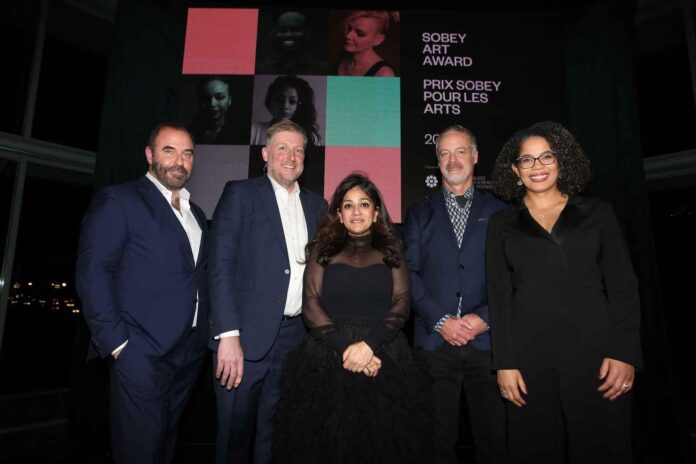Winnipeg-born Divya Mehra is C$100,000 ($75,000) richer after being named winner last night (16 November) of the 2022 Sobey Art Award, described by organiser the National Gallery of Canada as one of “the most generous prizes for contemporary artists in the world”, with a total of C$400,000 ($300,000) up for grabs.
“This is so surreal right now, this is so bananas,” said Mehra, whose parents emigrated from India, when accepting the award at the award ceremony in Ottawa. “I have been working since it feels like forever.”
She added, “I wanted to do comics since I was a teenager, I wanted to be a comic-book artist. I read every Archie Double Digest.” Marvel comics were another favourite. Fittingly, she said, she “uses humor as a point of entry” to her work.
Mehra represents the Prairies and North region of Canada, which also garnered top honors in 2021, when Laakkuluk Williamson Bathory, who had squared off with a polar bear and incorporated its skin into her winning work, took the award. Runners-up this time were Tyshan Wright (representing the Atlantic region), Stanley Février (from Québec), Azza El Siddique (from Ontario) and Krystle Silverfox (representing the West Coast and Yukon region), each of whom will pocket C$25,000 ($18,800). The 20 longlisted artists will each receive C$10,000 ($7,500).
Angela Cassie, interim director and chief executive of the National Gallery of Canada, tipped her cap to Mehra and all the artists who took part. “We thank all of the incredible artists who created dynamic experiences and allowed for new ways of seeing ourselves and our diverse stories,” she said. The five finalists are featured in an ongoing exhibition at the gallery (until 12 March 2023).
Mehra is a University of Manitoba and Columbia University grad who was also a Sobey finalist in 2017, when the age limit was still set at 40 and under. Among her works then was a crushed golden Jaguar car. She incorporates found artefacts and ready-made objects as symbols of resistance in a multitude of forms. Her first solo show in the US, at Los Angeles’s Night Gallery in 2021, consisted of two giant inflatable sculptures based on the emoji for an urn and a wave—a “tsunami of grief”, as she told The New York Times.
“The jury found Divya Mehra’s work resoundingly timely and sophisticated in addressing systems of cultural representation, production and authority,” jury chair Jonathan Shaughnessy said in a statement. “Untethered to any specific medium, the impact of Mehra’s practice extends beyond established constructs of art. Her approach is defined by its sharp wit, disarmingly playful allure, and attentiveness to language and aesthetics. Her most recent explorations turn towards issues of repatriation, ownership and modes of cultural consumption that fundamentally implicate both institutions and their publics.”
Mehra’s work has appeared on the cover of the now-defunct magazine Canadian Art and she was also featured on the CBC art documentary series In the Making, where she travelled to India to begin work on a new inflatable work, a bouncy replica Taj Mahal palace, which was then acquired by the National Gallery.
Her recent efforts involved a stone carving that was looted from India and had been on show at the MacKenzie Art Gallery in Regina, Saskatchewan for years, incorrectly identified as Vishnu. “I realised it was a female figure, the goddess Annapurna,” she said of the piece, which was subsequently returned to India. In its place, she added, “I proposed an Indiana Jones-inspired bag of sand”.

























